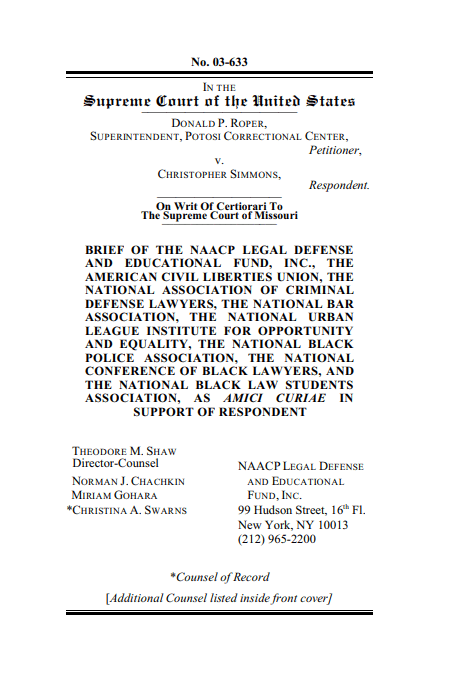
Summary of Argument
This Court has long sought to ensure that the death penalty is administered with channeled discretion, that decisionmakers consider and give effect to relevant factors counseling against death, and that arbitrary factors, such as race, do not dictate the outcome of life or death decisions. By steadfastly guarding these principles, this Court has endeavored to achieve a fair and color-blind death penalty.
Despite this Court’s efforts to excise race from the capital punishment calculation, it remains a pivotal factor in the administration of the juvenile death penalty. Decisionmakers — e.g., prosecutors and juries — are legally precluded from relying explicitly on race when exercising their discretion and deciding whether, and to what extent, a defendant’s youth weighs against a decision to seek or to impose a death sentence. But in practice, race remains a critical consideration. Specifically, empirical evidence suggests that for offenders of color, decisionmakers discount or altogether eliminate the mitigating value of youth. Thus, currently death-sentenced juveniles as well as juveniles who have been executed are predominantly youth of color.
Empirical evidence likewise demonstrates that young offenders of color are more likely than juvenile defendants generally to be wrongfully convicted, wrongly sentenced to death, and wrongfully subjected to an otherwise flawed adjudication. Much more than a majority of both exonerated juveniles and of exonerated juvenile offenders who had been prosecuted on the basis of false confessions are adolescents of color.
Because race continues to constrain the discretionary consideration of youth as a mitigating factor and increases the risk that juvenile offenders of color will receive a death sentence, this Court should categorically exclude juveniles from death penalty eligibility.